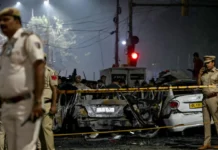India Post New Service
CHENNAI: India’s second mission to the Moon, Chandrayaan 2, with the aim of making a soft landing on the south pole of the lunar surface, was successfully launched from the Satish Dhawan Space Centre in Sriharikota, Andhra Pradesh, at 2.43 p.m. Monday.
The GSLV-Mk III rocket with Chandrayaan-2 spacecraft was originally scheduled for flight at 2.51 a.m. July 15. However, the flight was postponed after a technical snag was detected an hour prior to the rocket lift-off.
The ISRO later rectified the fault in its 44-metre Geosynchronous Satellite Launch Vehicle-Mark III (GSLV-Mk III). Weighing about 640-tonne, the GSLV-Mk III rocket is nicknamed ‘Bahubali’ after the hero of a successful film of the same name.
Just like the protagonist of the film lifted a heavy Lingam in one of its scenes, the rocket is carrying the 3.8-tonne Chandrayaan-2 spacecraft.
About 16-minutes into its flight, the Rs 375-crore GSLV-Mk III rocket is expected to sling the Rs 603-crore Chandrayaan-2 into its 170×39,120-km orbit.
ISRO has sent up three GSLV-Mk III rockets so far. The first carried Crew Module Atmospheric Re-entry Experiment in December 2014. The second and third GSLV-Mk III carried communication satellites GSAT-19 and GSAT-29 in February 2017 and November 2018 respectively.
GSLV-Mk III will also be used for India’s manned space mission in 2022.
India’s first moon mission, Chandrayaan 1, was launched in October 2008. Among its many achievements was the discovery of widespread presence of water molecules in lunar soil.
Chandrayaan operated for 312 days as opposed to the intended two years but the mission achieved 95 per cent of its planned objectives.







